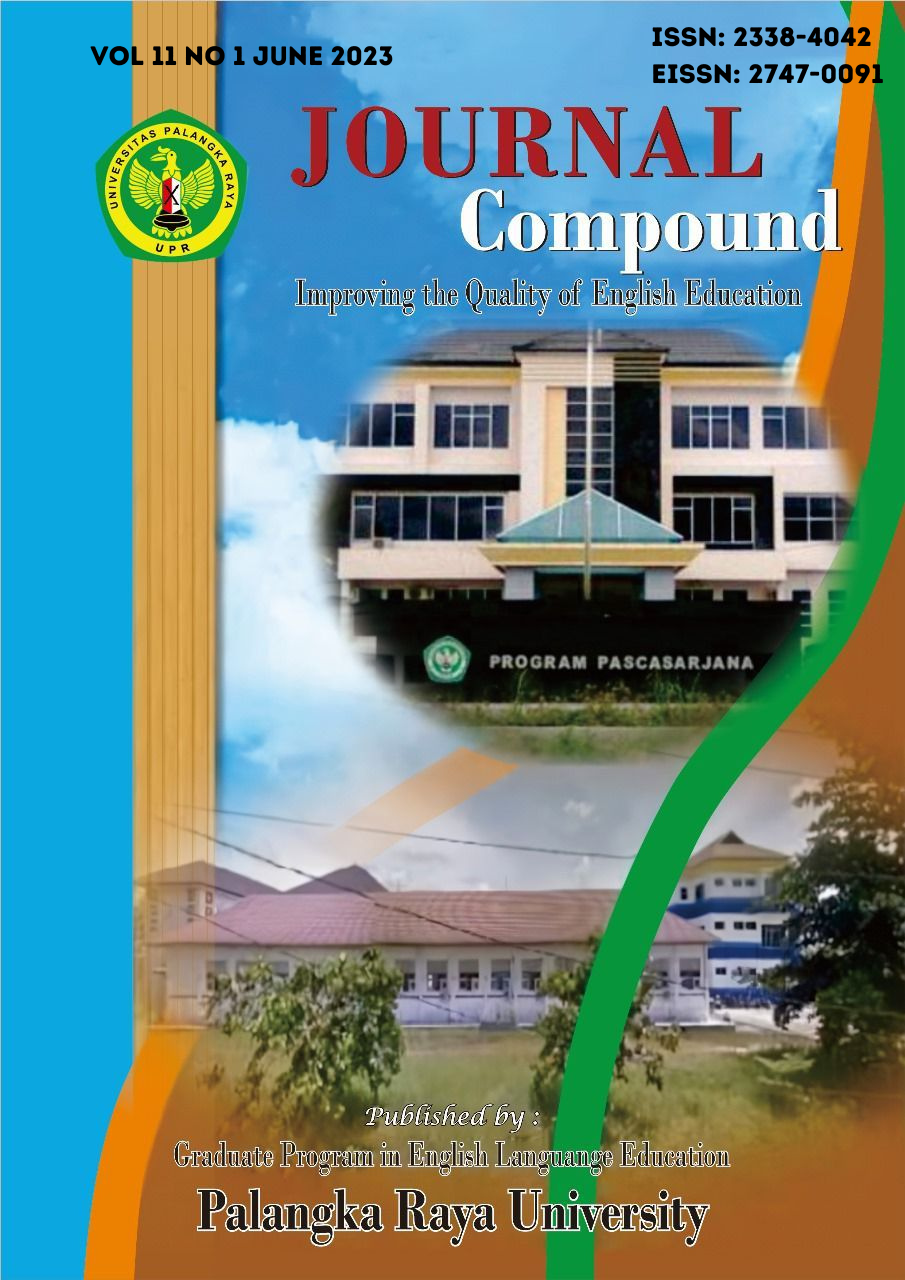PHONOLOGICAL INTERFERENCE OF DAYAKESE TOWARD ENGLISH WORDS PRONUNCIATION
DOI:
https://doi.org/10.37304/jcp.v11i1.14884Keywords:
Phonological Interference, Dayakese, Students’ English Words PronunciationAbstract
This research aimed to explore the phonological interference made by Dayakese students in SMPN Satu Atap-1 Kamipang Regency in pronouncing English words, not only to know the types and most dominant type of phonological interference in students’ pronunciation, but also to identify the strategies to avoid phonological interference of Dayakese toward English words pronunciation. This research employed descriptive qualitative research. The participants of this research were all of the students of SMPN Satu Atap-1 Kamipang Regency, therefore this research applied total population sampling. Three instruments such as pronunciation test, observation, and interview were used in this research. The result showed that phonological interference in this research happened in all three categories: sound addition, sound omission, and sound replacement, but mostly it happened in sound replacement category as many as 305 phonological interferences made by the students. This showed that most of the students tend to replace the phoneme they could not pronounce appropriately according to standardized English pronunciation. Even though several phonemes did not exist in Dayakese, the students could pronounce some of them properly because the students were familiar with those sounds, such as consonants /f/, /v/, /z/, /ʒ/, and diphthong /ʊə/. As in the classroom, the words which consisted of those sounds were often used. Besides, the phonemes which caused phonological interference for most of Dayakese students based on this research were consonants /θ/, /ʤ/, /ʃ/, /ʧ/, /ð/, vowels /ə/, /æ/, and diphthongs /ɪə/, /əʊ/, /eə/. several strategies used by students were repeat pronouncing, students’ correction, re-reading the text, read slowly, asking frequently, and paying attention to the teacher. However, the teacher also applied several strategies to overcome this issue: 1) Encouraging the students to practice by keeping them actively involved in class activities such as reading aloud in front of the class; 2) Correcting students’ error pronunciation after they finished reading a text; and 3) Repeat pronouncing to give the example to the students on how to pronounce the words.








